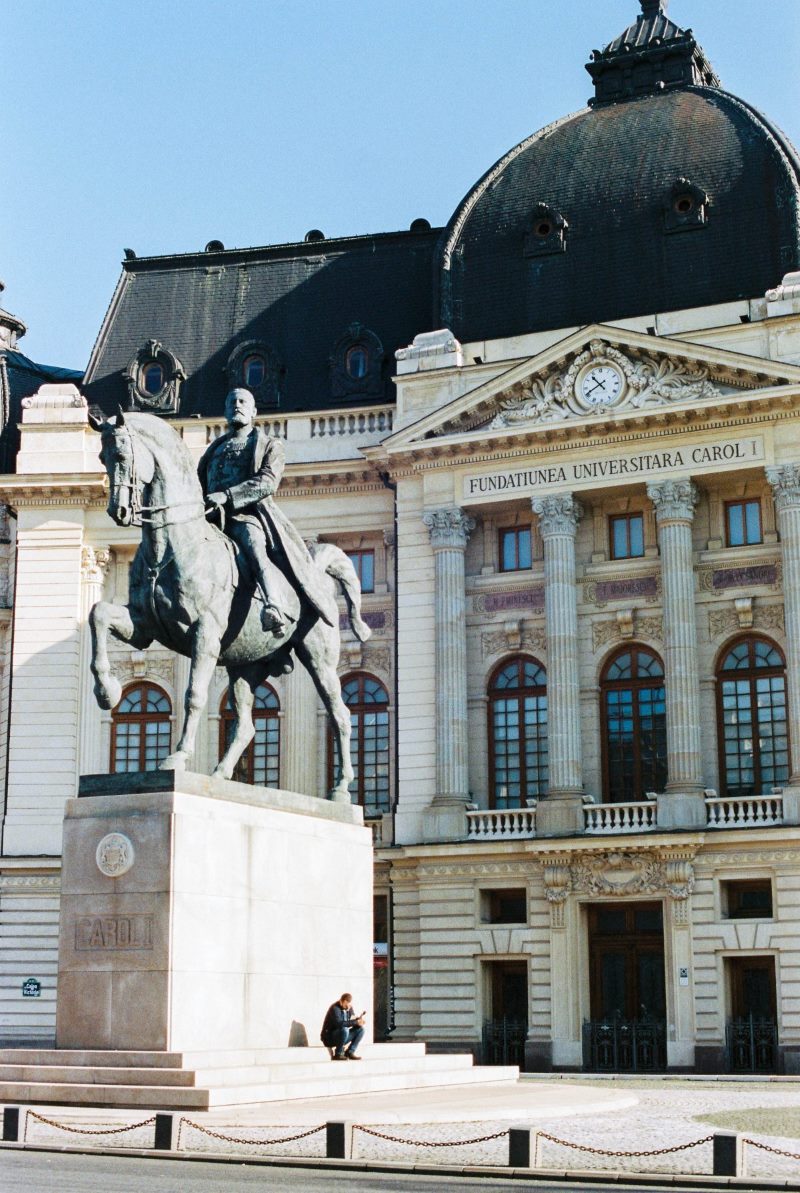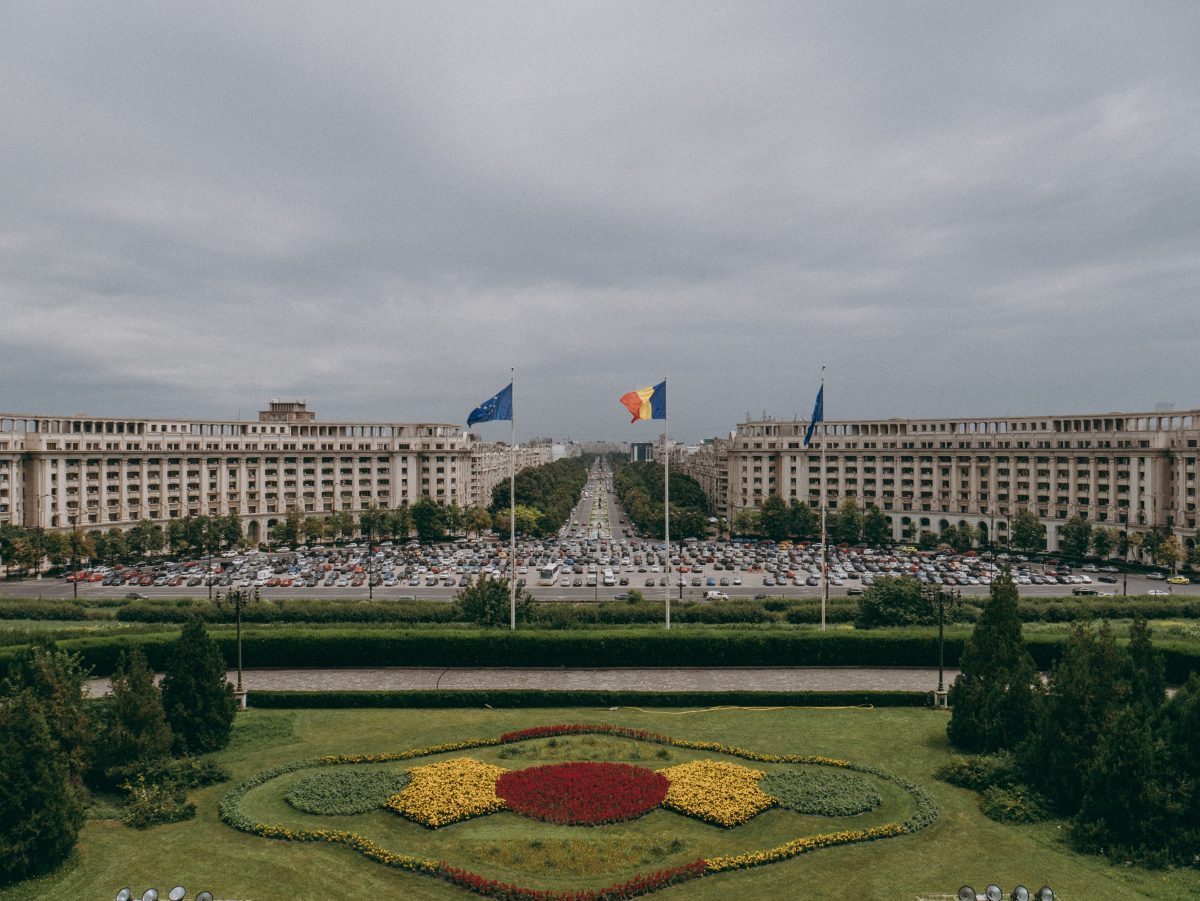How to Plan Your Day Trip to Medieval Bulgaria from Bucharest
If you’re visiting Bucharest and want to experience a different culture, history, and architecture, taking a day trip to Bulgaria is the best option. With a quick travel time of around 3 hours, this tour is a great opportunity to see some medieval churches and explore the rich Bulgarian culture. Here’s how to plan your day trip to Medieval Bulgaria from Bucharest:Step 1: Book the Tour
The first step is to book your day trip to Bulgaria from Bucharest. We recommend booking through GetYourGuide, a reputable third-party tour operator. The day trip takes you to the Ivanovo Rock Churches, Veliko Turnovo, Tsarevets Hill, Samovodene Artisans Street, and Arbanassi. You can book the tour through this link.Step 2: Prepare for the Trip
Before embarking on the day trip, remember to bring your passport as you’ll be crossing the Bulgarian border. Additionally, consider wearing comfortable shoes and bringing a bottle of water as some parts of the tour involve walking. Lastly, bring some local currency as you may need it for food or souvenirs.Step 3: Start the Tour
The tour starts in the morning when your guide will pick you up from your hotel in Bucharest. From there, you’ll cross the border and head to Bulgaria. The first stop on the tour is the Ivanovo Rock Churches, a UNESCO heritage site with preserved frescoes. The churches are carved into the rock and have a unique and impressive design.Highlights:
- Visit the UNESCO heritage site at the Ivanovo Rock Churches
- Explore the remains of the castle and church of the Bulgarian Kings at Tsarevets Hill
- Walk on Samovodene Artisans Street and experience the workshops of locals, including copper smiths, silversmiths, and icon painters
- Discover the traditional Bulgarian architecture in the village of Arbanassi
Step 4: Explore Veliko Turnovo
The next stop is the city of Veliko Turnovo, the former capital of the Second Bulgarian Empire. Veliko Turnovo is known for its unique architecture and history, including the remains of Tsarevets Hill, a castle and church of the Bulgarian Kings dating back to the 12th century.Step 5: Visit Samovodene Artisans Street
One of the highlights of the tour is walking along Samovodene Artisans Street, where you can experience the workshops of local artisans. You can find a variety of workshops here, including copper smiths, silversmiths, icon painters, and many more. This street is full of history, and many workshops have been passed down for generations.Step 6: Discover Arbanassi
The final stop on the tour is the village of Arbanassi, which is known for its traditional Bulgarian architecture. You’ll get the chance to visit a typical local house and learn about the traditional way of life. In conclusion, a day trip to Medieval Bulgaria from Bucharest is a great opportunity to experience a different culture and history. By booking this tour and following these steps, you’ll get to see some of the most impressive historic sites in Bulgaria. Don’t miss out on this unique opportunity, book the tour today!
Frequently Asked Questions about Bucharest
1. What is Bucharest?
Bucharest is the capital city of Romania, located in the southeastern region of the country. It is also the largest city and the cultural, political and economic center of Romania.2. What language do they speak in Bucharest?
The official language of Bucharest is Romanian. However, English is widely spoken and understood, especially in hotels, restaurants, and tourist attractions.3. What is the currency in Bucharest?
The currency in Bucharest, as in the rest of Romania, is the Romanian leu (RON). You can exchange foreign currency at banks, exchange offices or at the airport. ATMs are also widely available.4. What is the best time of year to visit Bucharest?
The best time to visit Bucharest is from May to September when the weather is warm and sunny. This is also the peak tourist season, so expect higher prices and crowds. If you don’t mind colder temperatures, then winter can also be a good time to visit, especially around Christmas when the city is decorated with lights and festive decorations.5. How do I get around Bucharest?
Bucharest has a well-developed public transportation system, including buses, trams, trolleybuses and a metro system with four lines. You can purchase a rechargeable card, called the RATB Card, to use on all public transportation. Taxis are also widely available, but it’s best to use a reputable company and make sure the meter is turned on.6. What are some must-see attractions in Bucharest?
Bucharest has many attractions to offer visitors, including:- The Palace of the Parliament, the second-largest administrative building in the world after the Pentagon
- The Old Town, a historic district with cobbled streets, colorful buildings, and lively cafes
- The Village Museum, an open-air museum showcasing traditional Romanian architecture and folklore
- The National Art Museum of Romania, with an impressive collection of Romanian and European art
- The Romanian Athenaeum, a beautiful concert hall built in the neoclassical style
7. What is the food like in Bucharest?
Romanian cuisine is influenced by its neighbouring countries, but has its own unique dishes as well. Some popular dishes to try in Bucharest include:- Sarmale – cabbage rolls stuffed with minced meat
- Mititei – grilled spicy sausages
- Mici – a type of meatball made from a mixture of beef, lamb and pork
- Papanasi – a Romanian dessert made from cottage cheese and topped with sour cream and fruit jam
8. Is Bucharest safe to visit?
Bucharest is generally a safe city to visit, but like any big city, there are areas that are more dangerous than others. It’s important to be aware of your surroundings and take precautions, such as not flashing valuables and being cautious of pickpockets in crowded tourist areas. It’s also a good idea to avoid walking alone at night, especially in deserted areas.9. How much should I budget for a trip to Bucharest?
Bucharest is a relatively affordable city compared to other European capitals. A budget traveler can get by on around $30-$50 USD per day, while a mid-range traveler should budget around $75-$100 USD per day for food, accommodations, and activities. Luxury travelers should plan to spend well over $150 USD per day.10. What are some cultural customs and etiquette to be aware of in Bucharest?
Romanians are generally friendly and hospitable, and appreciate visitors who take the time to learn about their culture. Some customs and etiquette to be aware of in Bucharest include:- Shaking hands is the most common way to greet people, both in formal and informal settings
- When entering someone’s home, it’s customary to remove your shoes
- It’s polite to bring a small gift, such as flowers or chocolates, when visiting someone’s home
- Dress modestly when visiting churches or other religious sites
- Smoking is prohibited in many public places, including restaurants and bars
Book Your Tour Now
Bucharest is a fascinating city with a rich history and culture. With its impressive architecture, delicious food, and friendly people, it’s no wonder that more and more tourists are choosing to visit this charming city. By following these frequently asked questions, you’ll have a great starting point for planning your trip to Bucharest.
How to Spend Your Time as a Tourist in Bucharest
Bucharest, Romania’s capital city, is a vibrant cultural center that offers a unique blend of old-world charm and modern-day sophistication. From historic buildings and museums to trendy cafes and restaurants, there is something for everyone in Bucharest. Below is a list of places to visit and things to do to get the most out of your time in this bustling city.
Visit the Palace of the Parliament
Bucharest’s Palace of the Parliament is an iconic landmark that is worth visiting. This colossal building is the second-largest administrative building in the world and boasts nearly 3,000 rooms. The palace was built in the 1980s during the reign of communist leader Nicolae Ceaușescu and is a stunning example of neo-classical architecture. You can opt for a guided tour to explore the palace’s opulent chambers and halls.
Stroll Through Herastrau Park
Herastrau Park is one of the largest parks in Bucharest and features a man-made lake that adds to the park’s scenic beauty. The park is an ideal destination for a relaxing picnic, a leisurely stroll, or renting a bicycle or a boat on the lake. The park also hosts various concerts and events throughout the year, so be sure to check its schedule.
Check Out Old Town
Bucharest’s Old Town is a must-visit destination for anyone looking to soak up the city’s rich history and admire its stunning architecture. The Old Town is home to many historic landmarks, including the Stavropoleos Monastery, the Old Princely Court, and the CEC Palace. The area is also famous for its bustling nightlife with numerous bars, restaurants, and clubs dotted throughout the winding streets.
Visit the Village Museum
The Bucharest Village Museum is an open-air museum that showcases Romania’s rich cultural heritage by featuring traditional houses, crafts workshops, and artifacts from various regions of the country. The museum’s 272 exhibits are spread over a 14-hectare park, so be sure to wear comfortable shoes and spend ample time exploring the different exhibits. The museum is an excellent destination for families with children as it offers interactive workshops and demonstrations throughout the day.
Go Shopping in Calea Victoriei
Calea Victoriei is a bustling street that is home to some of Bucharest’s finest boutiques, shops, and cafes. The street is also famous for its stunning architecture and is lined with majestic buildings such as the National Museum of Art, the Athenaeum, and the Cantacuzino Palace. Even if you are not looking to shop, a leisurely walk through this street will give you a glimpse of Bucharest’s elegant side.
Explore the National Museum of Romanian History
The National Museum of Romanian History is an excellent destination for history buffs and culture enthusiasts. The museum features a vast collection of artifacts that trace the country’s rich history from prehistoric times to the present. The museum also hosts temporary art exhibitions, and a stroll through its halls is a great way to spend an afternoon.
Visit the Manuc’s Inn
Manuc’s Inn is a historic building that played a significant role in Bucharest’s social and cultural development. The inn was built in the early 19th century and was a popular destination for travelers, businessmen, and political figures. Today, the inn serves as a cultural center and is home to various art galleries, cafes, and shops.
Sample Local Cuisine
Bucharest is famous for its traditional cuisine, which is an intriguing blend of Romanian, Balkan, and Ottoman influences. Be sure to try local delicacies such as sarmale (stuffed cabbage rolls), mici (grilled minced meat rolls), and papanasi (fried doughnuts with cheese and sour cream) at one of the city’s many restaurants and cafes. If you are feeling adventurous, explore one of the local markets where you can find a variety of fresh produce and samples of local cheeses and meats.
Final Thoughts
Bucharest is a city that offers something for every type of traveler. Whether you are interested in history, culture, or simply want to relax and enjoy the city’s vibrant atmosphere, Bucharest will not disappoint. This guide is just a starting point, and there is much more to explore and discover in this fascinating city, so pack your bags and get ready to enjoy an unforgettable adventure in Bucharest.
Table of Contents

